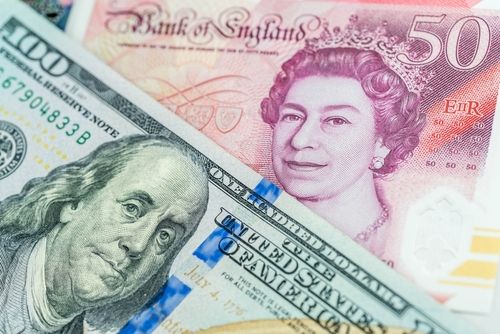Market Analysis: GBP/USD rally extends as softer CPI bolsters rate cut expectations
GBP/USD moves back above 1.32 as softer CPI inflation allows for a greater chance that the BOE will cut rates, improving sentiment further.
The British pound extended its rally for a seventh consecutive day on Wednesday, surging to a six-month high against the US dollar. GBP/USD climbed back above 1.32, recovering much of the bullish momentum lost during the sharp pullback earlier this month. While the pound had previously lagged behind the euro as an alternative to the dollar, it now appears to be catching up. The Relative Strength Index (RSI) is approaching overbought territory, hinting at potential resistance ahead. Still, there may be room for further upside toward 1.3280 – a level that has historically attracted selling pressure.
GBP/USD daily chart

Past performance is not a reliable indicator of future results.
Recent UK economic data has likely contributed to sterling’s strength. On Wednesday, the latest inflation figures revealed a larger-than-expected drop in March. Headline CPI rose 2.6% year-over-year, below the 2.7% forecast and down from February’s 2.8%. Core CPI – which excludes volatile categories like food, alcohol, and energy – met expectations, declining from 3.5% to 3.4%.
Meanwhile, the Consumer Prices Index including owner occupiers’ housing costs (CPIH) increased by 3.4% in the 12 months to March, down from 3.7% in February. Clothing prices were the main driver of upward pressure.
Labour market data released Tuesday showed the unemployment rate holding steady at 4.4%. Wage growth came in slightly below expectations, although core wages (excluding bonuses) still posted a gain in February, albeit weaker than forecast.
Despite these mixed signals, markets are now pricing in an 85% probability that the Bank of England (BoE) will cut rates by 25 basis points at its next meeting. The softer inflation print has added to this expectation. So far, the BoE has cut rates by only 75 basis points during this cycle – notably less than the 100 basis points cut by the US Federal Reserve and the 200 basis points by the European Central Bank.
Typically, currencies weaken when rate cuts are anticipated, as a lower interest rate differential reduces their attractiveness. However, the market appears to be prioritizing growth concerns, especially given ongoing uncertainty tied to US trade policy. President Trump’s potential reconsideration of tariffs, including automotive duties, has already improved global risk sentiment.
In this context, the softer UK inflation data has provided a further boost to investor confidence. A rate cut by the BoE may ultimately support the economy more than it harms the pound, even if it narrows the yield gap with other major currencies.